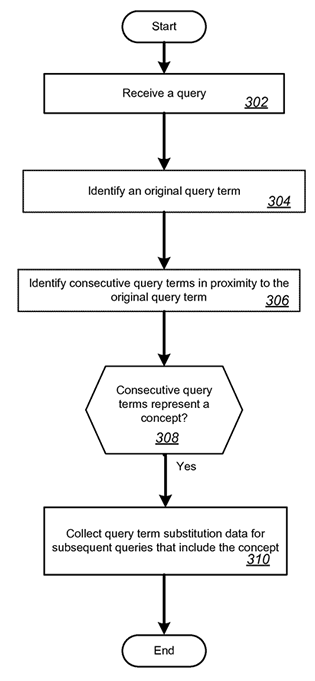If you want to sell on Amazon Europe, it is essential that you know how Amazon SEO works. These are the crucial aspects that you cannot ignore if you want your listings to appear first in the marketplace search results.
This is a guest blog post written by Jordi Ordóñez. Jordi is an independent eCommerce and Amazon consultant located in Barcelona (Spain), who has been working with companies like Intersport, Audi, Volkswagen and Nike since 2000. He has also written eBooks for Amazon Sellers titled “How to SEO on Amazon” and “The FBA Guide”.
If you’re an online retailer eager to sell on Amazon Europe, I will tell you –although you probably know it already– that you’re not the only one.
According to data from Ecommercenews.eu, more than 360,000 new retailers entered Amazon Europe in 2017 –that’s roughly 36% of new sellers worldwide. There are many brands and sellers publishing listings on Amazon every day, and many of them compete directly with your product category.
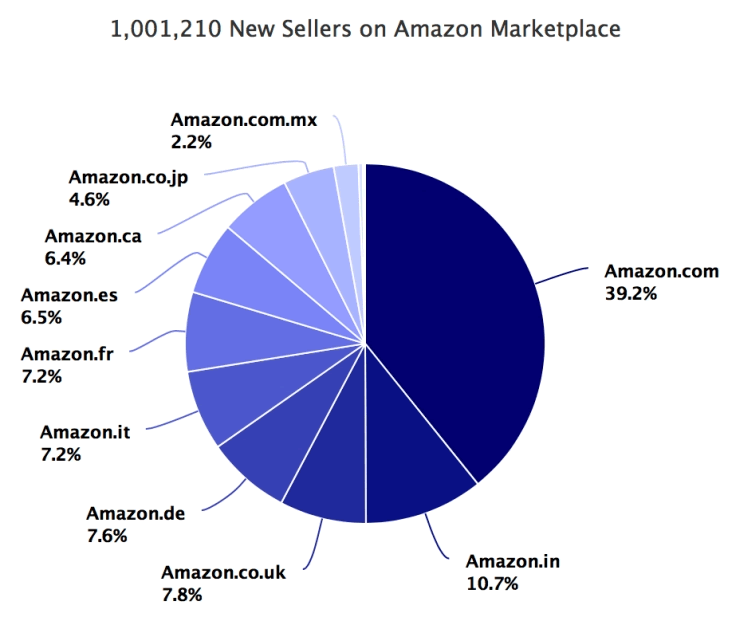
But I’m not trying to discourage you: I’m just telling you so that you are aware of what the arena you’re going to perform in is like. You will not be the only one offering your products; in fact, you will have to compete for your rankings with other merchants who sell the same products as you and, sometimes, even with Amazon itself and its more than 100 white label brands.
In my day to day as a consultant, I am in contact with many brands that want to sell on Amazon. And believe me, the number of companies that are in the process of integrating Amazon into their online distribution strategy is impressive. But I am convinced that you can overcome any obstacle if you get to know and master Amazon SEO, because this is how you will get the rules of the game work in your favor.
So yes, there are many merchants starting up an Amazon store, although very few of them manage to build a successful business out of it. But I assure you that you can accomplish it if you just know how to do it.
Now, this is all you need to know about Amazon SEO if you want your Amazon business to take off, rise up and fly to the top.
Overview
It is likely that everything you know about SEO, whether it’s a lot or just a little, is related to Google. And it is so because, so far, you’ve probably only had to face the rules of the most famous search engine in the world, which holds a dominant position in Europe.
But things on Amazon work a bit differently. The factors that make your products rank on Amazon are not the same as Google’s, and the process of indexing and ranking your content does not work in the same way either.
So the first thing we are to explore together on this post is the difference between traditional Google SEO and Amazon SEO.
Next, we will review the Amazon ranking process step by step as well as the ranking factors applied by its algorithm, A9 –or A10, as some rather call it–, compared to the Google ranking process and the traditional SEO ranking factors.
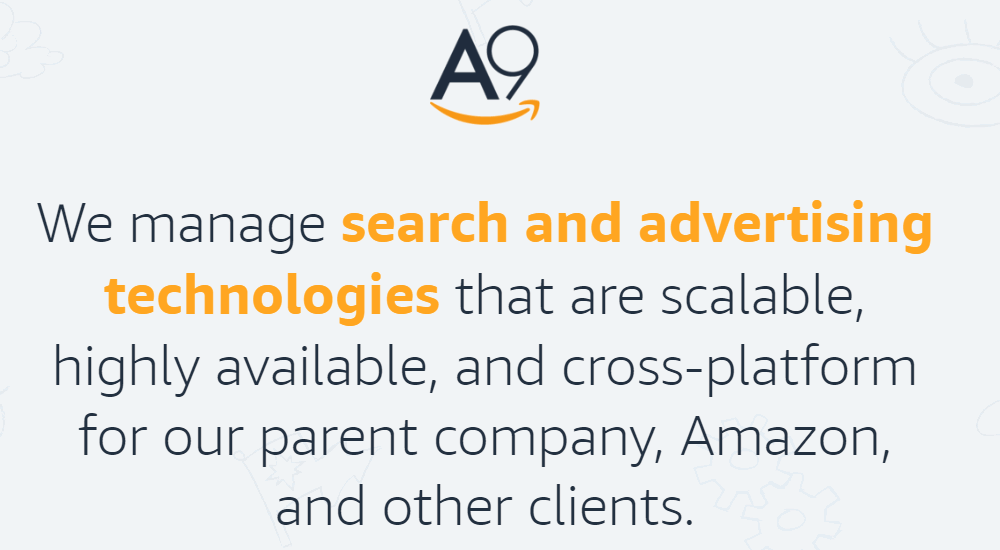
And finally, I’ll show you how to create top content listings and how to optimize them to help your products rank highly on Amazon.
You will see that it is not all that complicated: it is only a matter of knowing how to do it and just putting it into practice.
Traditional SEO (Google) vs. Amazon SEO
Traditional SEO and Amazon SEO match in some aspects, but their starting point is different.
Google SEO is much broader in regards to both its focus and techniques; and it is so because it takes into account more varied realities, contexts and search intentions.
In contrast, Amazon SEO goes much more to the point, because it focuses on people looking for a product or a product category with a purchase intention. In addition to that, everything happens on the same site, which means that some typical SEO techniques, such as link building or technical SEO, simply do not make sense.
We will now take a look at the features of traditional SEO and will compare them to Amazon SEO’s. You’ll see that, in general, Amazon SEO is much more focused on sales and content.
1. Comparison by type of search
Traditional SEO contemplates searches with a considerable variety of intentions:
- Informational searches: these are those searches that users make in order to get further information about a product or a product category. They involve very general keywords.
EXAMPLE: if you have a perfumery and cosmetics online shop, here you would consider very generic terms, such as “soiree makeup”, “perfume for a first date” or “lipstick reviews”, as well as keywords like “day cream”, “anti-aging serum” or “body milk”.
- Navigational or brand searches: search terms here include brands, both ours and those of the competition. Searches including products or product categories sold by us and linked to a brand are also taken into account.
EXAMPLE: Following the same example, these search terms are a bit more specific, since they include the given brand. Here we would consider the brands we sell (Dior, Chanel, YSL, Clarins, Calvin Klein …) or our own brand (Bluebelle Perfumery & Cosmetics, to make up a brand). Also, products or product categories associated with a brand: “Dior makeup”, “Clarins day cream”, “Dior anti-aging serum”, “Nivea body milk” or “Chanel perfumes”.
- Transactional searches: these are searches with a purchase intention, which are the most likely to end up in a conversion.
EXAMPLE: these are the most specific terms and include “buy”, “buy online”, “where to buy” or derivatives in addition to the main keyword. For example, “Clarins day cream buy online”, “Chanel perfumes where to buy” or “Dior makeup Barcelona stores”.
- Search intention resolution: finally, traditional SEO also values and takes into account that a given search result solves the user intention. This factor is becoming increasingly important since the emergence of the artificial intelligence algorithm Rank Brain which, actually, comes from a patent granted back in 2015 named “Using concepts as contexts for query term substitutions”.
In contrast, for Amazon SEO only two issues matter: brand and transactional searches. The reason seems quite obvious: because on Amazon all users look for brands and products with a purchase idea in mind. Any informational research has already been made beforehand outside of Amazon.
2. Comparison by techniques and colors
In terms of techniques, Google SEO presents 3 aspects, which work together to achieve the best results:
- Contents
- Technical SEO
- Link building
And it can also be classified by colors, depending on how clean you play or how much you have gone to the dark side:
- White hat SEO
- Gray hat SEO
- Black hat SEO
Comparatively, Amazon SEO is a lot simpler: the only thing that matters when it comes to improving your rankings on the marketplace is the quality of the content, that is, your listings’ quality –and, of course, their pricing, sales and reviews.
As we said above, on Amazon some traditional SEO techniques, like link building, do not make sense, since everything happens on the same site; and sellers do not have access to technical SEO parameters, which are controlled exclusively by Amazon.
It doesn’t make sense either to talk about “colors”, since on Amazon it is not possible to carry out the same dubious techniques as in Google or to deceive Amazon’s algorithm with typical Google Black or Gray hat practices, which are usually related to link building and technical SEO –precisely the parameters that are beyond your control on Amazon.
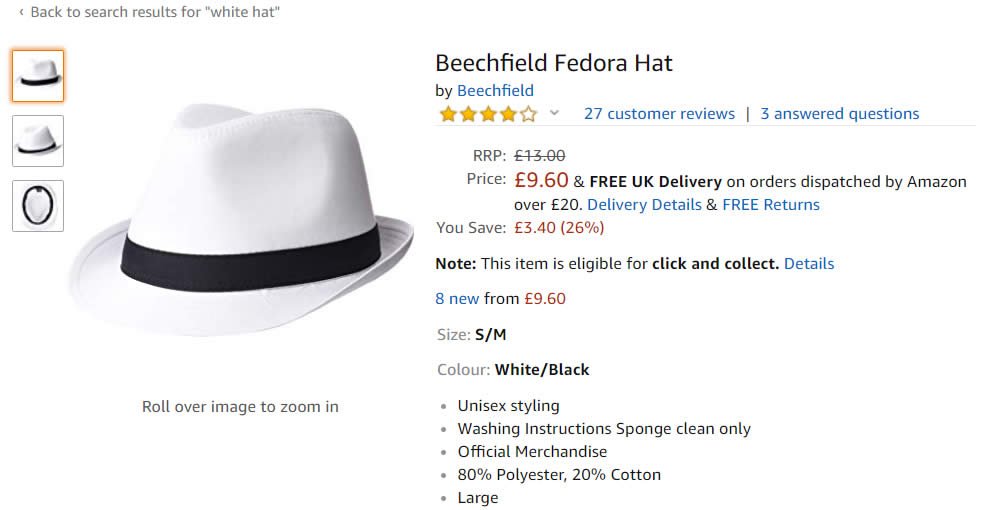
Despite this, not everything is “white” on Amazon. Amazon Black hat SEO is different from Google’s, but it exists. It consists mainly of dirty play techniques carried out by competitors who know well Amazon’s algorithm ranking factors and who will explicitly seek to penalize your listings or to improve their own rankings by using techniques openly penalized by Amazon.
EXAMPLE: A classic Amazon Black hat SEO situation consists of massively purchasing your product in order to leave you out of stock, then returning all those units step by step and finally publishing a legion of negative reviews that will seriously affect your listings’ rankings on Amazon and the average of reviews assigned to your seller.
3. Comparison by type of keywords
Regarding the type of keywords on which traditional SEO is based vs. Amazon SEO, I’m sure that you know that Google SEO’s keywords can be:
- Head tail: keywords that can bring you more income, but also those which have more competition and for which it is more difficult to bid or to be positioned by.
- Long tail: the easiest keywords to dominate; they’re very specific, they don’t have much competition and they tend to include a purchase intention, although a low search volume. However, all Long tail keywords combined can end up bringing you as much traffic and revenue as Head tail keywords (see the graphic below for more details).
In traditional SEO, we work with both types of keywords, since they both can help your online store rank higher and also attract quality traffic that might end up in a conversion.
However, on Amazon SEO things are different: Head tail keywords work better. Forget about Long tail keywords: they bring conversions, but a lot fewer.
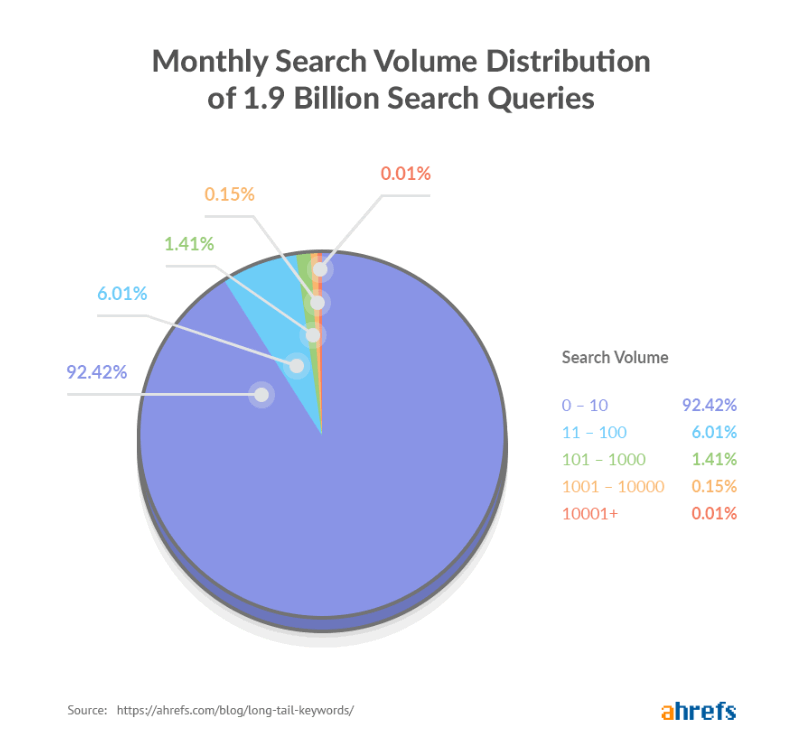
4. Comparison by type of strategy
Traditional SEO usually deals with 3 fronts:
- Traditional SEO’s main task consists of dodging the algorithms (Panda, Penguin, Quality/Phantom, Medical, Piracy…). It is all about avoiding that the algorithms new versions hit us and ruin all the work we’ve done so far.
- It is supported by PPC: with Google progressively offering a better positioning to its payment services customers, it is essential to support the SEO work with ads. Social networks, on the other hand, offer very interesting segmentation options and are becoming increasingly “shoppable”, offering us the possibility of getting more quality traffic as days go by.
- Nobody knows what might happen tomorrow: at any time, Google can alter its algorithm without any warning at all.
What strategy do we use to face Amazon SEO?
- Amazon SEO does not dodge algorithms, but dodges changes on A9/A10, mainly modifications of listings weighting by query.
- Since it takes place in a specific commercial site, when doing Amazon SEO you must take into account any changes in the Terms of Service (ToS). If your listings are not up to date with these conditions, Amazon’s algorithm will penalize you.
- It is wise to support Amazon SEO with Amazon PPC (especially, right when you start your activity as a seller on Amazon) and also with external PPC, mainly ads on Facebook and Instagram, which are cheap, have a good ROI and offer very interesting segmentation options.
- Nobody knows what might happen tomorrow: as in Google, changes on A9/A10 take place without any warning, from one day to the next. But to top it off, in the case of Amazon a direct competitor can come up rocking great listings out of the blue at any moment, or even worse: Amazon can launch a white label brand that competes with your products directly.
A9/A10: Amazon’s algorithm ranking factors
At this point, you’re probably interested in knowing which factors can influence your rankings on Amazon; or, in other words, which are A9/A10’s ranking factors.
Good news is: there are many things you can do to make your listings rank higher. Not so good is that, having so many ranking factors, the matter will give you quite a lot of work.
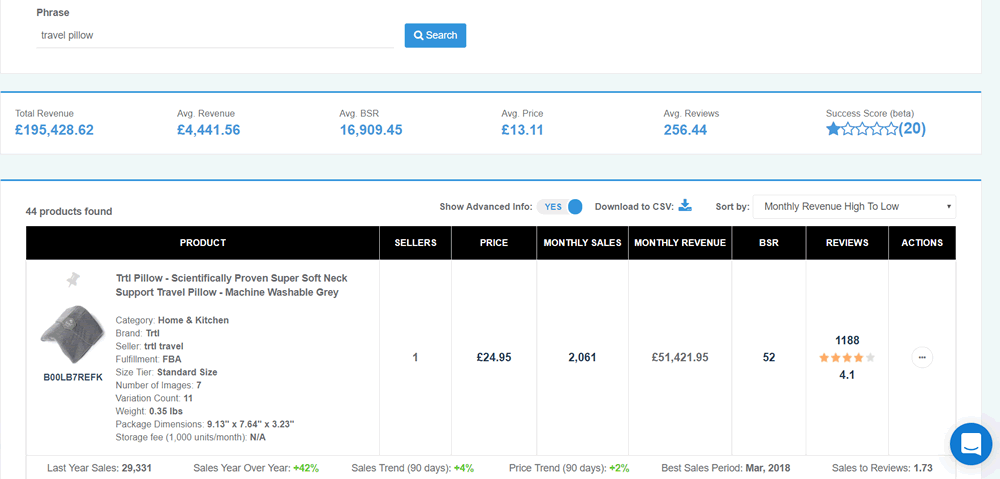
These are all A9/A10 ranking factors:
- Sales history: Amazon values the number of accumulated transactions. Between two sellers who offer the same product, the best position will be for the one with the highest sales volume.
- ASIN reviews (Amazon’s product identification code) and merchant history: Amazon takes into account the number of accumulated reviews, both to position or to penalize the product itself and, more globally, the seller.
- Reviews’ average score: positive reviews improve your positioning, so it is important that your product fits what you promise and that the shopping experience is (more than) satisfactory. But, above all, it is important that your customers say so. So do not hesitate to invite them to evaluate (positively) their experience with you, and to do everything in your hand to get them to delete negative reviews in case you have any left.
- Price and fulfillment: Amazon values the lowest price and having control over logistics. In that sense, the evaluation order in terms of fulfillment is as follows:
- Sold and sent by Amazon (Vendor).
- Sold by a third party with Amazon logistics and storage (FBA), which may or may not be within the Prime program. Of course, it’s better to be within Prime.
- Sold and sent by a third party (Fulfillment by Merchant or FBM).
- That the product is an Amazon’s Choice: cheaper product, with more and better opinions and/or better availability.
- Stock/product availability: Amazon appreciates that the product is in stock. Not being in stock is a killer for your rankings.
- Product categorization: the correct categorization of the product within the Amazon category architecture favors its ranking.
- Description: having a truthful product description which focuses on the product benefits, uses Head tail keywords, is clear and makes the most of the rich elements offered by Amazon’s listings to merchants (such us bullet points) is positive for your rankings.
- Amazon A+ Content: the option of A+ Content for your product listings is at your fingertips, you just have to request it to Amazon. These are much more visual and complete product pages, which also rank higher on the marketplace search results.
- Images: one of the listing key points are images, and we will go through this in more detail later on. For now, we’d only like to mention that the images quality, as well as the use of a variety of images that comply with a series of technical and graphic features, is an A9/A10 ranking factor.
- Listing update and optimization: if your listings are reliable and up-to-date, and if they are correctly optimized both at a content and at a resource level, that makes your listings rank higher on Amazon.
- CTR in searches: it is also positive if you have a good Click-Through Rate in search results within Amazon.
- Visits ratio: the higher the volume of visits to your listings, the better their rankings.
- Visits vs. Conversion ratio: even better for you is having a high conversion rate in relation to your visits volume. In fact, the higher the conversion ratio, the better.
All in all, it looks like a job, right?
But then again I have good news for you: of all these factors, the most important ones are just a few. So, if you initially do not have resources for everything, try to focus on these aspects:
- Sales history.
- ASIN reviews and merchant history.
- Reviews average score.
- Pricing and fulfillment, prioritizing:
- Sold and sent by Amazon (Vendor Program)
- Sold by a third party with Amazon logistics and storage (FBA), as a part of the Prime program.
- Stock/product availability.
Ranking process on Google vs. Amazon step by step
Now that we’ve understood Amazon’s algorithm ranking factors, I will explain how the Amazon ranking process works step by step and what sets it apart from Google’s ranking process, which is the one you’re probably used to.
On Google, the ranking process follows these steps:
- Crawling: Google bots track your site (via sitemap, Fetch as Google, social media or backlinks) and find new content.
- Indexing: Google indexes the new content on its index.
- Ranking: Based on a number of factors, Google evaluates the content and assigns a position for it on its rankings.
Once your content ranks, some of the factors that can have an influence for better or for worse are:
- Pogo sticking: If you have been on a Google ranking position for some time, but your content does not solve the user’s search intention, Google will conclude that you shouldn’t rank for that keyword and your position on the ranking will go down.
- Dwell time: It is the time between the moment a user clicks on a search result and the moment that user returns to the SERP; that is, the time spent reading any given content. The higher the dwell time, the better for that content ranking, since Google deduces that the content is relevant and useful for the user.
- Backlinks: that is, external links pointing to your page. They improve your rankings if they come from authoritative and qualified URLs that already rank well on Google, and also if they increase in number in a natural way (or in an apparently natural way).
- Relevance: the fact that a content solves the user’s search intention improves the ranking of that content on Google.
Finally, when ranking we can enter the phase of stability or the phase of penalty: Google values that a content remains stable in time, and also takes into account if it’s received any penalties. Google makes small changes on its algorithms very often, and those changes can affect your rankings, so you should be aware of them.
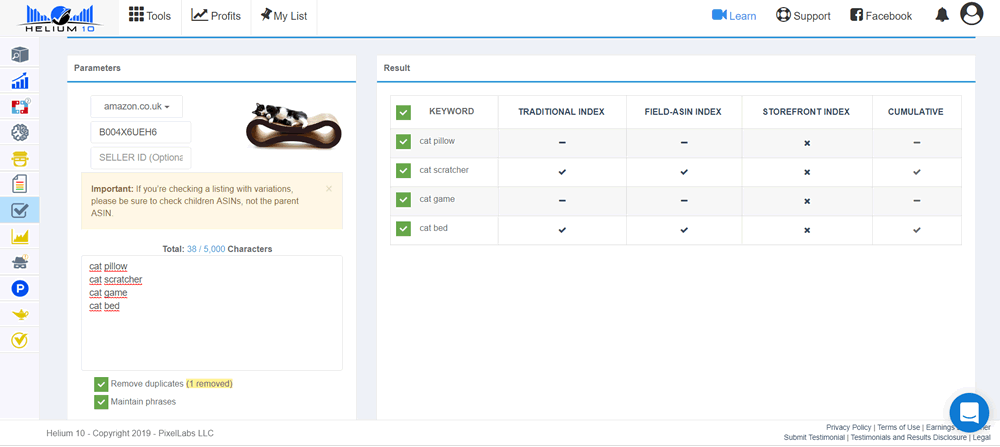
On Amazon, on the other hand, the ranking process goes on like this:
- Creation and publication of a listing, which is sent for validation.
- Index of the content by the keywords selected by you and also the keywords extracted from the content itself by Amazon. You can check which keywords are those manually orby using some tools. One of my favorite tools to do this is 5K Checker of Helium 10.

- Once this is done, Amazon’s algorithm starts ranking the listing. This is when you should start getting sales. A quick way to do it is by PPC ads inside and outside of Amazon.
- Amazon Search Shuffle: the ranking assigned to the listing goes up and down for a while until it stays in a rather stable position.
- Consolidation of the ranking position: this is attained through sales history and reviews.
- Fight against your competitors and against Amazon to get the Buy Box: the Buy Box is the box with the button that allows users to “add the product to the cart” directly from your listing, and not all merchants are eligible to have it. If they’re not, those merchants appear linked from another merchant’s Buy Box in a box called “Other sellers on Amazon“. Needless to say that who wins the Buy Box gets many more sales and, subsequently, more reviews.
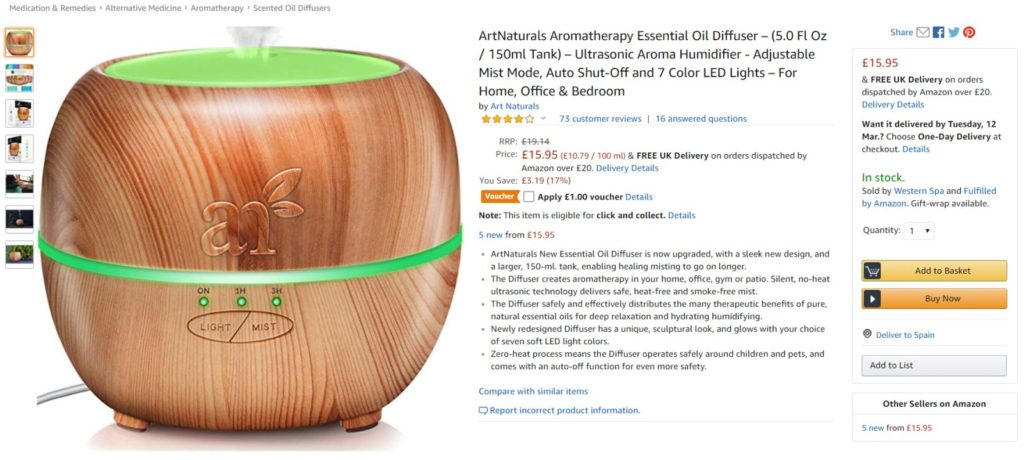
- Penalties for claims, bad ratings, stockouts or due to Black hat SEO techniques performed by your competitors: your listings can be penalized if they receive many complaints, have many negative reviews or are the victims of aggressive dirty play techniques carried out by your competitors.
PRO TIP: If your listings are penalized due to this last issue, through Amazon Brand you can register your brand and have a direct line to talk about the problem with Amazon.
- Changes by the minute: Amazon can change the rules of the game from one minute to the next, so you must be absolutely up-to-date on everything. And not just the rules: it is been known for a long time that Amazon changes its prices millions of times per day and that merchants have automatic repricing tools, so man, welcome to the party.
As you can see, the Amazon ranking process revolves around listings, which is the only type of content produced on the marketplace.
How to optimize a listing for Amazon SEO?
Well, now we have hit the heart of the matter: the listing.
Before you start writing your product listings on Amazon, I suggest you stop for a moment and plan beforehand how you are going to solve the following aspects, which are crucial for your listing to be optimized for Amazon SEO:
- Keyword research: do it taking into account search volumes, product seasonality, profit margins and customer reviews to third-party listings belonging to the same product category.
PRO TIP: you have a number of very valuable tools, both inside and outside of Amazon, to make your keyword research:
Within Amazon, the ones I like the most are:
And outside of Amazon:
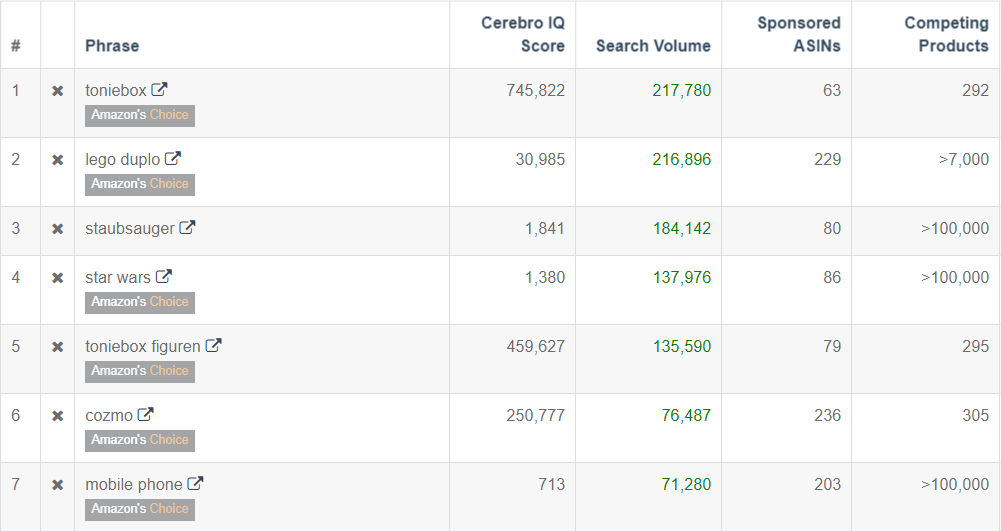
- Content: first, keep in mind if you are going to have a standard listing page or if it’s going to be an A+ Content. Secondly, think what follows very well:
- The product description
- The bullet points (or short product description)
- Product specifications
- Images and videos
- Keywords and Platinum Keywords (the latter just in case you are a best seller of that particular product)
- Regular content updates based on customers feedback –obtained through reviews or users questions–, or in case there are any changes in the product specs (change in measurements, manufacturing materials, etc.)
Amazon listing optimization 101
And now let’s see what you should take care of the most when creating your listings. Let’s start with everything related to the content you’re about to create.
#1 – Title
- Length: 250 characters maximum, the equivalent of about 50 words.
- The title must include: key benefits of the product, USP or differential value (what differentiates you from the competition) and top keywords.
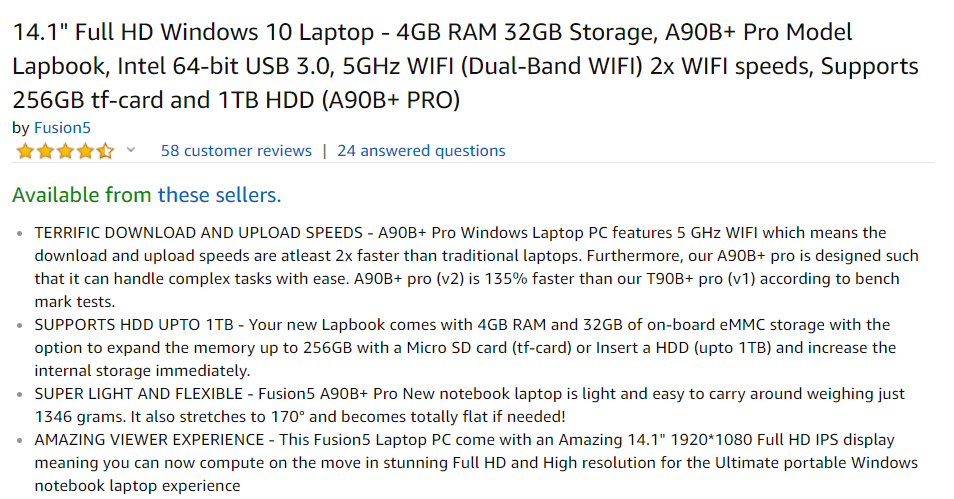
#2 – Short description
- You can use up to 5 bullet points, so use them!
- Length: maximum 1,000 characters or 25 words per bullet point.
- Include the product rational or emotional benefit.
- Include the product key features or benefits at the beginning of the listing.
- Include guarantees applicable to your product: 1 year warranty, free returns, free assembly…
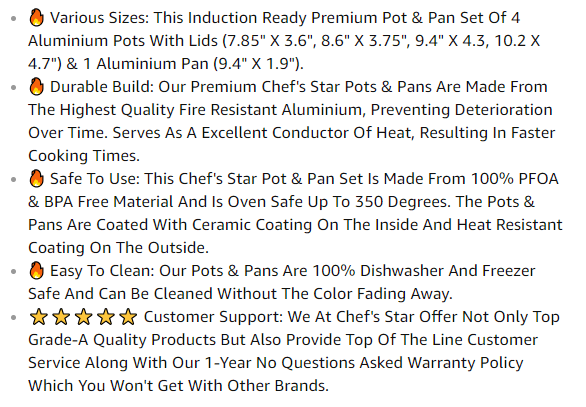
#3 – Long description
- Length: maximum 2,000 characters including spaces.
- Use short and concise sentences, maximum 15-25 words per sentence.
- Use main and secondary keywords in your product description.
- Beware of keyword stuffing, avoid it.
- Avoid repeating sentences you have already inserted on the listing title.
- Include the backend keywords (250 characters including spaces), avoiding exclamation marks on the main keywords.
- Technical sheet: each product page has additional fields depending on the product category it belongs to. These fields are very relevant and need to be filled out.
#4 – Images
- You can add up to 6 product images (and you can also add video when it’s an A+) to your listings.
- Recommended image resolution: 1000x1000px.
- Make sure that the main image is a packshot, with a white background and no graphics or text that might mess up with the product.
- Use your images to show different product angles to your users.
- Make sure that at least one image shows the product inside its original packaging.
- Include some images with people using the product.
- Also include an image with product measurements and a recognizable size reference.
- In general, the images should show all product benefits and main features.
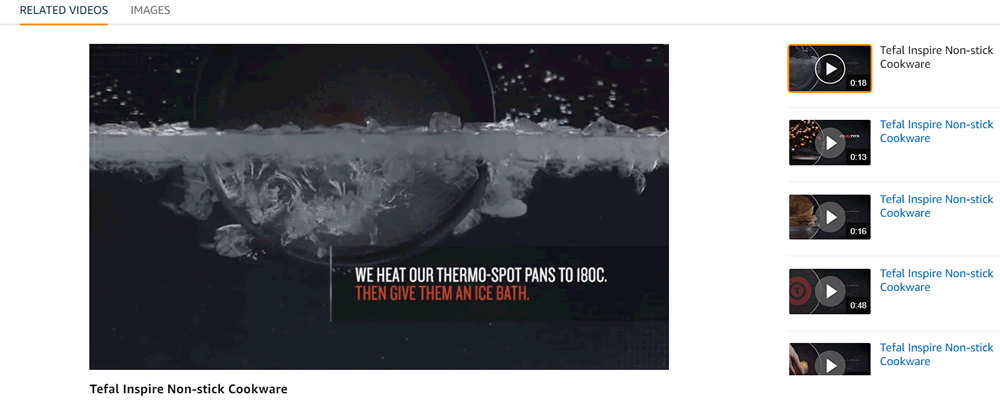
And now we’ll explore those listing aspects that will influence your rankings and that are related to your level of customer satisfaction and your product evaluation.
#5 – Product evaluation
- Try hard so that you always get 5 stars.
- Identify your clients’ complaints, talk to them and provide them a satisfactory solution. This way they won’t publish negative reviews or, if they do and afterwards you solve their problem, you’ll be able to ask them to remove those bad reviews.
- Use complaints, positive points and customer questions to improve your product descriptions. Use your reviews as well: if a 3 year-old child does not understand a product, it means that this product is for +3 year-old kids.
- If you have bad reviews, try to get more good reviews to compensate the bad ones.
- Never lie about your product or the review system will strike you down.
- If you buy reviews, try not to buy 5-stars reviews only: buy a few 3/5 to balance them out.
#6 – Reviews
- The more positive reviews you have, the better (at least 15).
- Keep customers informed about their order status.
- Add value on each email including something that is related to your product. Example: if you sell a Vegan Milker, include a vegan drinks recipe eBook as a gift.
- Do not send too many emails or too often.
Keep in mind that this is Amazon listing optimization 101, so it is quite basic and rather general. If you want to go deeper into the subject, at Orangeklik you will find very complete posts with specific copywriting tips and many examples that will help you make your listings shine, like this one or this one.
And once you’ve reached this point, you already know everything you need to know to get your listings rank higher on Amazon. You just have to put these tips into practice and see how quickly your Amazon business starts taking off.


